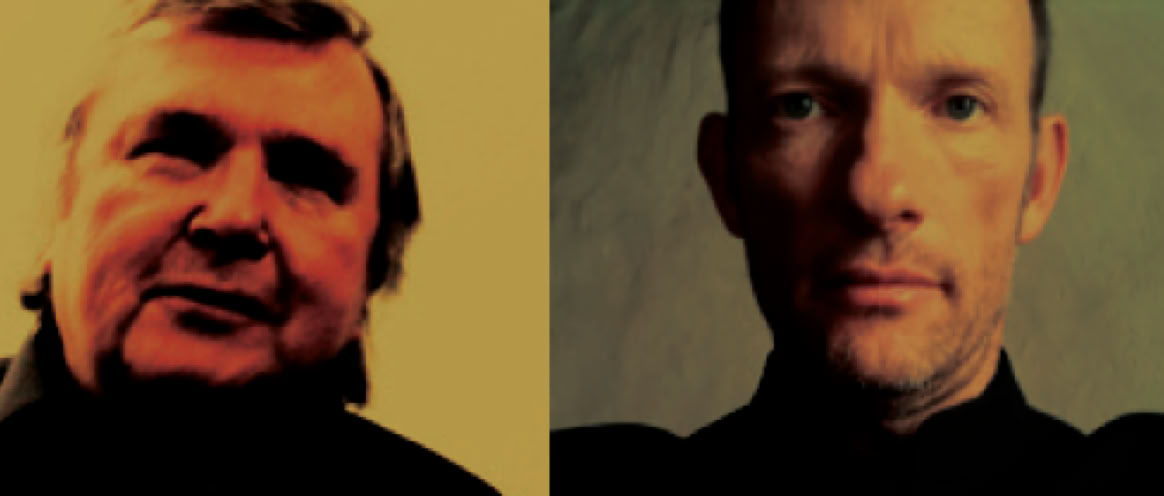CATALOG nemu 011

contact / booking:
Melencolia Suite was recorded February 2011 by Reinhard Kobialka at Topaz Studio, Cologne. Melencolia Epilog was recorded Mai 2011 by Hagen Stüdemann at Kulturknastfenster Brüel. Mixed and mastered by Albrecht Maurer, translation by Eva Lietzow–Chinn, Cover painting by Hans W.Scheibner, Graphic Design Concept by Christiane Resch, produced by Theo Jörgensmann and Albrecht Maurer
Theo Jörgensmann - g-low clarinet, voice
Albrecht Maurer - violin, viola, voice
Theo Jörgensmann and Albrecht Maurer personify respectively wind and string instruments. In their new album, Melencolia, their performance reminds us simultaneously of the clarity and joy of being of Eric Satie, and the vigour of a musical combat in an Irish pub in the early hours of the morning. This joyous, virtuoso pair produces a touching love play between spirit and matter. The musical foundation of melancholy chosen by these two provides an ideal base, since melancholy as an expression of longing for illusive love, provides the motivation for creative imagination. In other words melancholy as the core of the freedom to creative improvisation also supports unprejudiced and liberal adoption.
In memory of the devastating world wars of the 20te century, artist Anselm Kiefer referenced Abrecht Dürer’s 1514 engraving Melencholia I in typically space filling monumental style in a fighter jet sculpture created in black lead. In actual fact, Dürer’s work itself arose from the inhumanly horrific and lawless Peasant Wars of the time. In quite different form, but in their musical medium equally poignant, Jörgensmann and Maurer give contemporary form to the atmosphere created by the old masters of the transformation – from dogmatic late middle ages to a renaissance, marked by pragmatism and intense interest in the natural sciences. They intone the composed notation and apparently chaotic indetermination of the present (the succinctly described post-modern that is the epoch-making transformation from the madness of technological omnipotence to ecological self-cautioning) through a sensitively moving melancholy breaking from dissonant poly rhythms. In their typically intuitive way, they deconstruct and re-animate - piece by piece - the multitude of musical materials offered up by time. Professionally practised and meditatively trained, their near solo performances combine to a flawless duet – a barely perceivable simultaneous listening and responding. Dürer’s engraving Melencolia shows a winged woman – her head, crowned by a wreath of leaves, resting on her left fist; clothed as if in wrappings, she rests her right arm on a heavy book and looks into the distant future holding in her fingers a large compass as writing implement. She is the personified return to the inspiration of the natural sciences after a period of oppressive and restrictive church dominated culture. In the background a comet and rainbow shine at once in the transition between day and night. The angel has dropped bags and keys. In this hour suited to melancholy, in the third quarter of the day, a bat flutters through the air, its dexterous wings carrying the title of the picture in the look of an intelligent being. All around useless still items are scattered in the shadow of the moonlight: ball, plane, chisel, saw, hammer, pliers, level, pen, scales, an hour glass, a bell, a magic square – seemingly without restraint as in a horror vacuity driven desire to add by collecting, thereby defying the knowledge that life is temporary and eternity forever illusive. Significantly, and directly relevant to the fallen angel, Dürer’s engraving also shows a puzzling octagon, eliciting curiosity and engendering a desire to explore; a patiently curled up dog that promises safety; and finally an infant, presiding atop a millstone in promise of a hopeful future. Together they seem to graphically represent Albert Camu’s appeal that Sysiphus is the image of a happy person in a connected harmonising triangle of composure.
It could be said then, that the duo of Jörgensmann & Maurer has a tendency to long for the open, unbound and subjectively believable composed expression. Their spontaneous creation is in the tradition of the first solo piece of Jimmy Giuffre – in the grip of personal loss and accompanied by his own foot tapping; but also making the link to “Picasso” by Coleman Hawkins which is an equally emotive solo work. Building on the knowledge and experience of collective improvisation gained over many years, this album meets the expectations of the audience that seeks enchanting, mysterious and future oriented musical utopia, perspective and optimism in contemporary music, which is so often dominated by the fashion of the moment and surrounded by the abandoned styles and short term fads of the recent past.
03.06.2011 Robert Bossard (translated from the German)